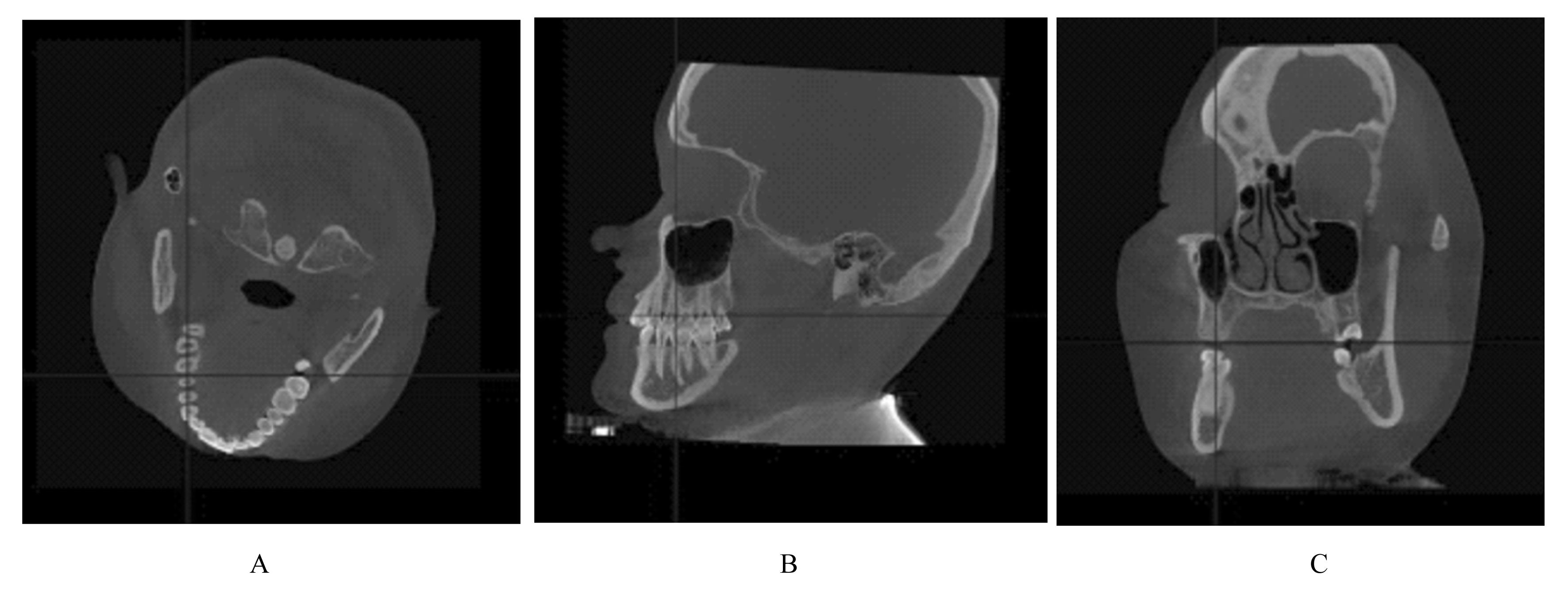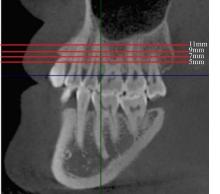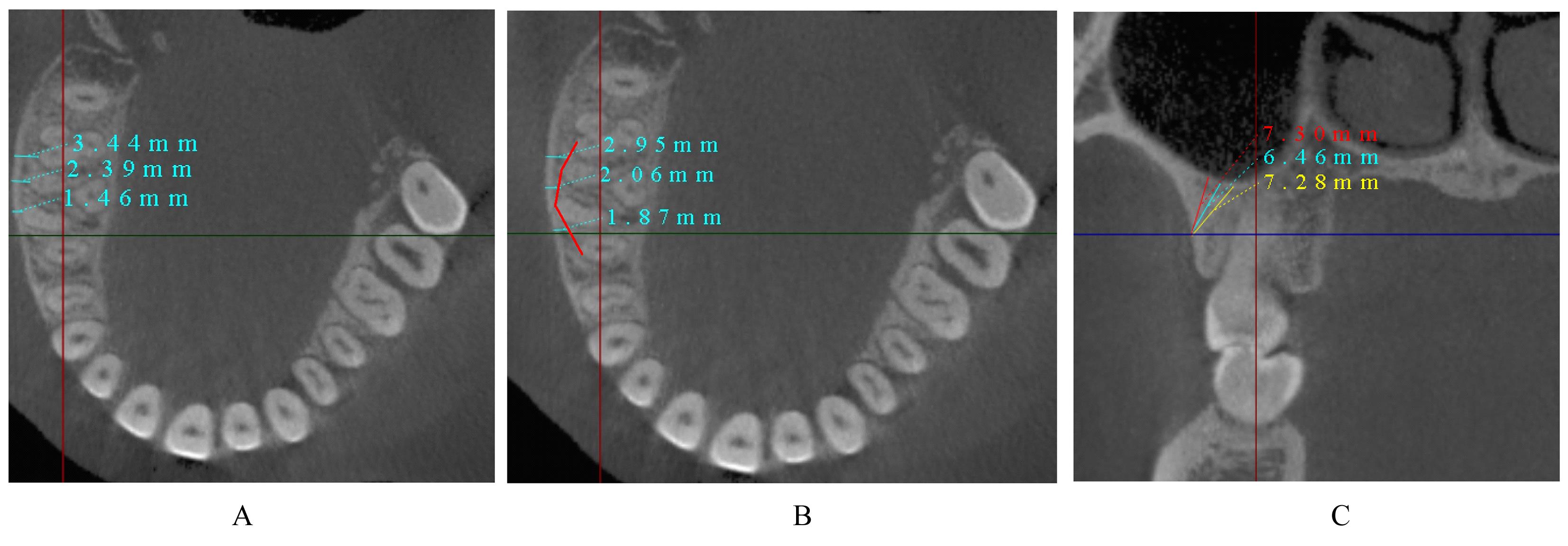| 1 |
YOON J H, CHA J Y, CHOI Y J, et al. Simulation of miniscrew-root distance available for molar distalization depending on the miniscrew insertion angle and vertical facial type[J]. PLoS One, 2020, 15(9): e0239759.
|
| 2 |
ALELUIA R B, DUPLAT C B, CRUSOÉ-REBELLO I,et al. Assessment of the mandibular buccal shelf for orthodontic anchorage:influence of side,gender and skeletal patterns[J].Orthod Craniofac Res,2021,24(): 83-91.
|
| 3 |
LIOU E J W, CHEN P H, WANG Y C, et al. A computed tomographic image study on the thickness of the infrazygomatic crest of the maxilla and its clinical implications for miniscrew insertion[J]. Am J Orthod Dentofacial Orthop, 2007, 131(3): 352-356.
|
| 4 |
QIN Y F, SHU G, XU T M. Evaluation of the relationship between maxillary sinus wall and maxillary canines and posterior teeth using cone-beam computed tomography[J]. Med Sci Monit, 2020, 26: e925384.
|
| 5 |
LIU H B, WU X X, YANG L, et al. Safe zones for miniscrews in maxillary dentition distalization assessed with cone-beam computed tomography[J]. Am J Orthod Dentofac Orthop, 2017, 151(3): 500-506.
|
| 6 |
林锦荣.一种新的种植体支抗技术在临床中的应用[J]. 中华口腔正畸学杂志, 2009, 16(1): 38-44.
|
| 7 |
SADEK M M, SABET N E, HASSAN I T. Three-dimensional mapping of cortical bone thickness in subjects with different vertical facial dimensions[J]. Prog Orthod, 2016, 17(1): 32.
|
| 8 |
王玉俏, 迟敬文, 刘轶凡, 等. 成人不同垂直骨面型颧牙槽嵴区骨皮质密度分析[J]. 上海口腔医学, 2019, 28(6): 652-656.
|
| 9 |
吴也可, 郜然然, 左渝陵, 等. 影响微种植体正畸治疗成功率的因素[J]. 中国组织工程研究, 2020, 24(4): 538-543.
|
| 10 |
NUCERA R, BELLOCCHIO A M, OTERI G, et al. Bone and cortical bone characteristics of mandibular retromolar trigone and anterior ramus region for miniscrew insertion in adults[J]. Am J Orthod Dentofac Orthop, 2019, 155(3): 330-338.
|
| 11 |
BAUMGAERTEL S, HANS M G. Assessment of infrazygomatic bone depth for mini-screw insertion[J]. Clin Oral Implants Res, 2009, 20(6): 638-642.
|
| 12 |
DU B R, ZHU J Y, LI L T, et al. Bone depth and thickness of different infrazygomatic crest miniscrew insertion paths between the first and second maxillary molars for distal tooth movement: a 3-dimensional assessment[J]. Am J Orthod Dentofacial Orthop, 2021, 160(1): 113-123.
|
| 13 |
LIMA A J R, DOMINGOS R G, CUNHA RIBEIRO A N,et al. Safe sites for orthodontic miniscrew insertion in the infrazygomatic crest area in different facial types: a tomographic study[J]. Am J Orthod Dentofacial Orthop, 2022, 161(1): 37-45.
|
| 14 |
吴 军, 陈振琦. 上颌第一恒磨牙根方颧牙槽嵴宽度的解剖分析[J]. 中国口腔颌面外科杂志, 2014, 12(6): 521-524.
|
| 15 |
张倩倩, 侯凤春, 于艳玲. 微种植体植入颧牙槽嵴区域的风险分析[J]. 中华口腔正畸学杂志, 2018, 25(1): 8-11.
|
| 16 |
FROST H M. Wolff’s Law and bone’s structural adaptations to mechanical usage: an overview for clinicians[J]. Angle Orthod, 1994, 64(3): 175-188.
|
| 17 |
MOSS M L, SALENTIJN L. The primary role of functional matrices in facial growth[J]. Am J Orthod, 1969, 55(6): 566-577.
|
| 18 |
苗珂馨, 王雪妮, 肖婷婷, 等. 不同垂直骨面型成人骨性Ⅱ类错( )患者上颌尖牙冠根角及周围骨结构的锥形束CT测量[J].郑州大学学报(医学版),2023,58(4):568-572. )患者上颌尖牙冠根角及周围骨结构的锥形束CT测量[J].郑州大学学报(医学版),2023,58(4):568-572.
|
| 19 |
姚 宇, 蔡 斌, 麦理想, 等. 青少年上颌后牙区微种植钉的植入角度研究[J]. 中华口腔医学研究杂志(电子版), 2013, 7(6): 460-465.
|
| 20 |
JIA X T, CHEN X, HUANG X F. Influence of orthodontic mini-implant penetration of the maxillary sinus in the infrazygomatic crest region[J]. Am J Orthod Dentofac Orthop, 2018, 153(5): 656-661.
|
 )
)






 )患者上颌尖牙冠根角及周围骨结构的锥形束CT测量[J].郑州大学学报(医学版),2023,58(4):568-572.
)患者上颌尖牙冠根角及周围骨结构的锥形束CT测量[J].郑州大学学报(医学版),2023,58(4):568-572.


